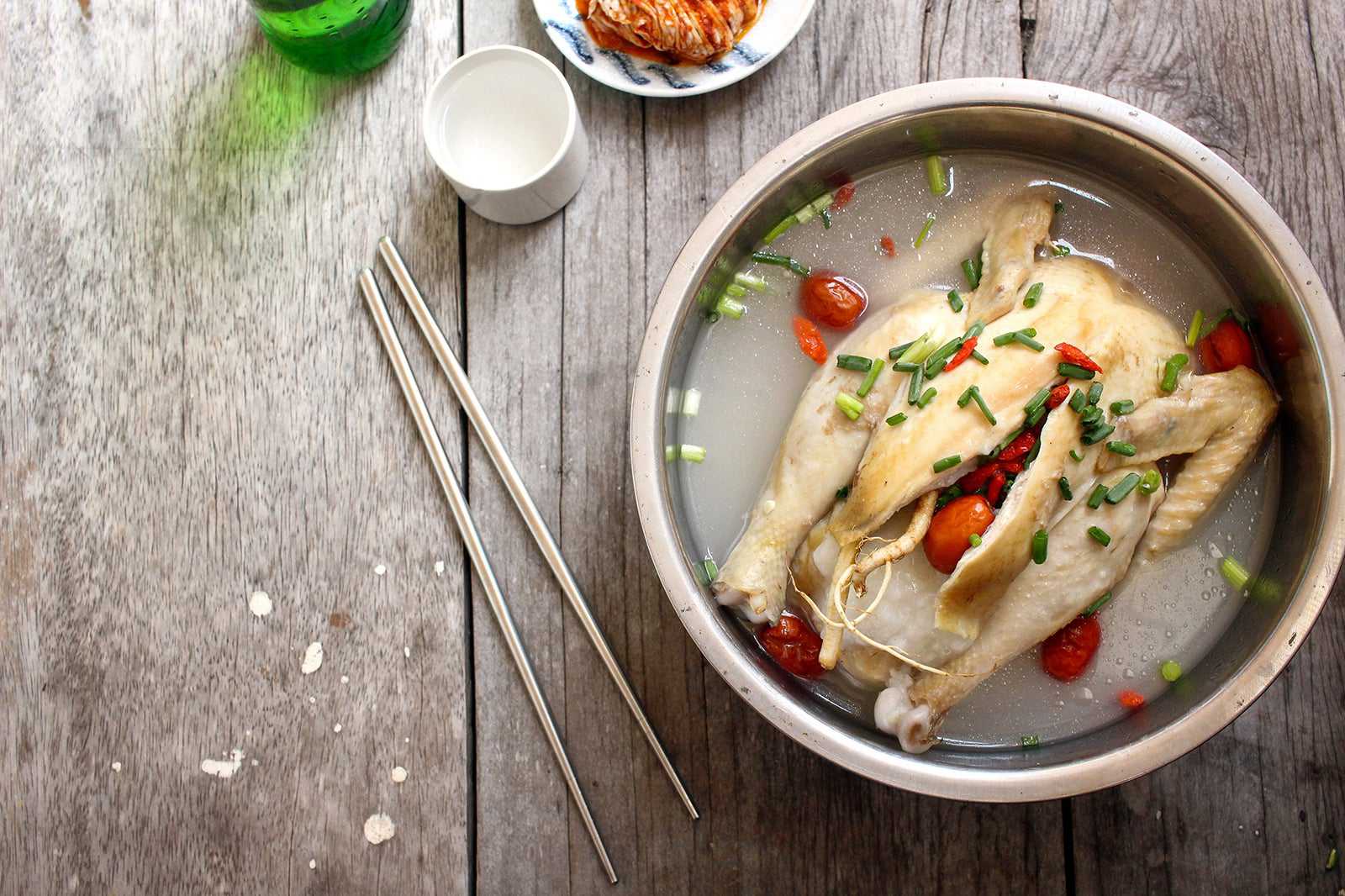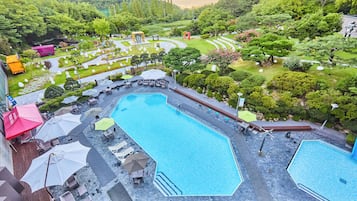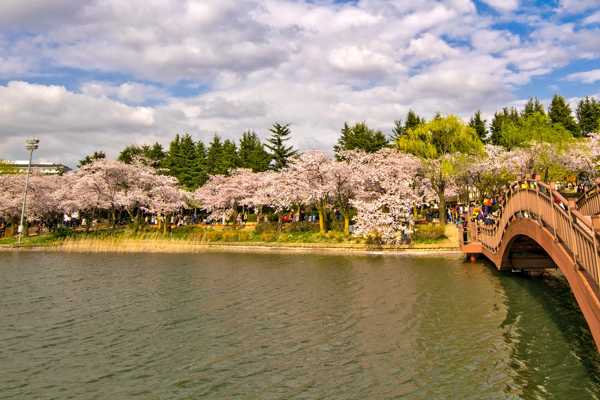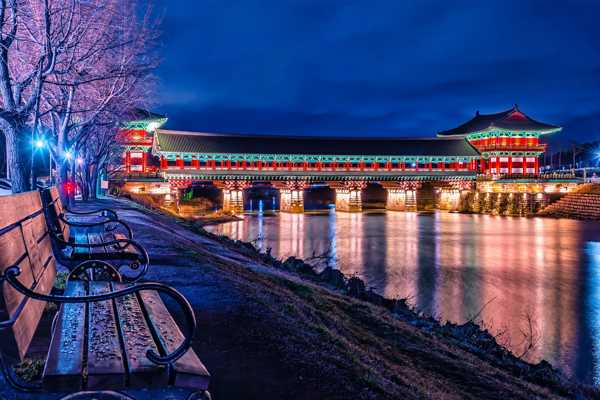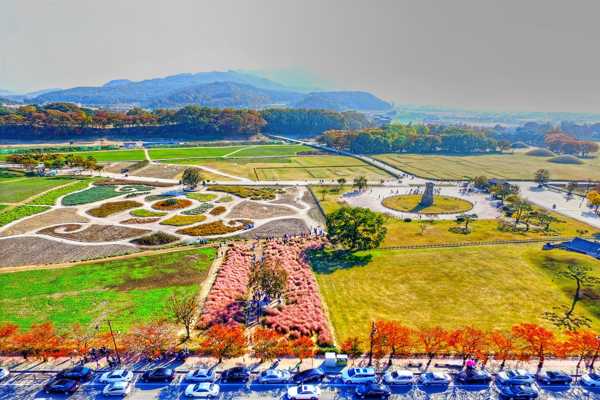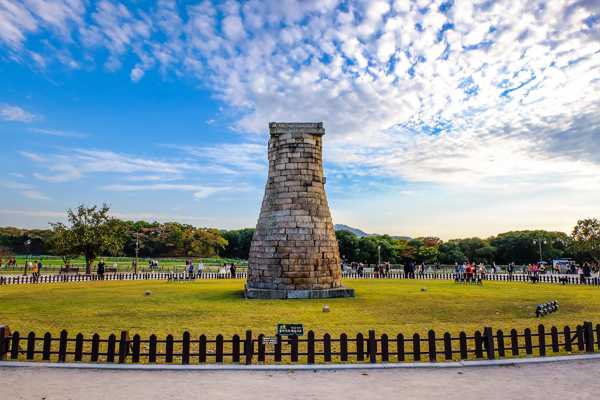This list of the best local dishes from Gyeongju runs through the sorts of tastes and flavours you'll get in the south-eastern coast town of the Korean peninsula. There is an eclectic mix, from raw fish to broiling ginseng broths that are said to help maintain health.
Gyeongju wows with its Buddhist heritage and rich religious history. But you're going to work up an appetite wandering the great shrines of the mystical Seokguram Grotto and the tomb-dotted downtown core of the city. This is where our guide of famous foods locals love to eat in Gyeongju comes in.
- 1
Bulgogi (grilled meat)
The national staple that everyone must try

- Ẩm thực
Bulgogi is one of the best local dishes in South Korea, let alone just the mystical city of Gyeongju. Literally meaning "fire meat", it’s a thinly sliced meat that's grilled on a metal mesh over charcoal. The cooking tradition actually goes back centuries – some historians have traced its origins right back to the Goguryeo era of the 1st century AD.
Gyeongju locals claim to have some of the very finest bulgogi anywhere on the peninsula. This is due to the city’s role as one of Korea's 5 largest cattle breeders. Bulgogi can either be eaten on its own or accompanied by a selection of side dishes, such as kimchi, lettuce, noodles, and rice.
- 2
Hwangnam-ppang (Gyeongju bread)
Round pastry stuffed with red bean paste

- Ẩm thực
Hwangnam-ppang is a must-try for sweet-toothed foodies in Gyeongju. Also called Gyeongju bread or Hwangnam bread, it's a small pastry made with egg-flour dough and filled with sugary red bean curd. People usually eat this one at all hours of the day, but most choose it as an on-the-go snack or light breakfast.
Of course, there's no better place to sample the treat than at the place where it was first invented way back in 1939. The Hwangnam Bread Original Store still churns out stacks and stacks of these bite-sized delights from its location at 783 Taejong-ro, Gyeongju-si.
- 3
Garlic chicken
Grab a bite and go

- Ẩm thực
Garlic chicken is a bit of a rite of passage for any foodie keen on sampling their way through Gyeongju. It's one of the most popular street foods in the North Gyeongsang Province, from Gyeongju all the way to Gunsan. The thing is, there's no standard recipe for the stuff. Every vendor and venue has its own version.
One place might sizzle up the chicken strips before dousing them in ginger ribbons and soy sauce. Other places add liberal heaps of chilli for a fiery flavour. You might even find vendors that do their best KFC impression, leaving you with something akin to the famous fast food.
- 4
Chueo-tang (loach soup)
Great for warming up on a chilly day

- Ẩm thực
Chueo-tang is a bowl of rich, warming and earthy flavours - a trademark dish of the North Gyeongsang Province. Technically, it's the speciality of the rustic inland city of Namwon, but the chefs of Gyeongju have also been making it for centuries.
The broth is made from boiled and deboned pond loaches, which is a type of small freshwater fish that's found in rice paddies after harvest. The whole lot is bulked up with soybean paste and chilli paste, lashings of ginger and mung beans, mustard seeds and pepper. It’s then served alongside boiled greens with a topping of mint.
- 5
Hoe (sashimi)
Raw fish cuts on a platter

- Ẩm thực
Hoe refers to a whole umbrella of local seafood that's essentially Korea's answer to sashimi. There's a real kaleidoscope of the stuff to get through, some sounding more intriguing than others. Take the sardine or cod cuts, for example, and then compare that to the raw snakehead or freshwater eel.
Different hoe dishes are prepared in different ways. Some are blanched in boiling salt water, others sliced as thin as can be and served raw with a dipping side of gochujang (Korean chilli paste). Gampo Village, just outside of Gyeongju, is the place to go if you're looking to try this raw dish.
- 6
Sundubu-jjigae (soft tofu stew)
Chilli-rich broth with a variety of meats and greens

- Ẩm thực
Sundubu-jjigae is a big capsicum hit for those who like their spice. It follows kimchi jjigae (kimchi stew) and doenjang jjigae (bean curd stew) to take a place among the most popular Korean stews. This one's key ingredient? Tofu. Specifically, the soft kind.
The dish is rarely meat-free as its base usually includes a stock made from fat-rendered beef or seafood, rice water, and hard-hitting gochugaru (chilli powder). Then come the vegetables and raw chilis, followed by a few squirts of uncurdled soft tofu that's usually sold in tubes.
- 7
Haejang-guk (hangover soup)
The locals’ cure after a night out in Gyeongju

- Ẩm thực
Haejang-guk is the dish you should reach for if you've had too much soju (Korean vodka) the night before. It's a broth that's said to be tailor-made for curing a hangover, but we'll let you decide how effective it really is.
There are variations of hangover soups across South Korea. However, the central idea is a big, comforting, meaty broth that's made from a base of water that’s boiled with pork spine. On top of that goes Napa cabbage, sea cucumber, and the ubiquitous bean paste. The place to eat this in Gyeongju is Parujeong Street, where you can find dozens of restaurants specialising in haejang-guk.
- 8
Tteok-galbi (minced spareribs)
Spareribs, but without the mess

- Ẩm thực
Tteok-galbi started life as a dish for the royals of the great Joseon Dynasty. Later, it was taken over by chefs of the southern Jeolla Province, and then to the cooks of Gyeonggi Province in the north. However, some chefs in Gyeongju claim they make the best in the country.
The idea here is to remove the fuss from spareribs. The meat is pre-cleaved off the bone, minced up, and flattened into a patty, but only after infusions of sesame oil, sugar, soy sauce, and chilli. The whole thing is then re-attached to the bone and sizzled over an open grill.
- 9
Samgye-tang (chicken and ginseng soup)
Traditional soup that fortifies the body

- Ẩm thực
Samgye-tang is one for the healthy eaters, not just in Gyeongju but also across the rest of South Korea. This traditional soup serves as a great fortifier for your body and immune system. In fact, this root-infused broth was even used to soothe sick consorts and queens back during the age of the Joseon Dynasty.
Today, locals enjoy a piping hot samgye-tang to fend off the weakening effects of summer days. What you get is a broiling mix of boiled ginseng root, ideally 6 years old, and a whole chicken, topped with all manner of herbs, seeds, spices, and sprouts.
- 10
Milmyeon (flour noodle soup)
A Gyeongju delight hailing from Busan

- Ẩm thực
Milmyeon might be hailed as the official dish of Busan city, but Gyeongju has also risen in the rankings to offer what some say is a just-as-good version of this South Korean staple. The dish is basically any broth that's made with flour noodles, as opposed to buckwheat noodles.
Usually, these noodles are tossed in a mix of veg and meat stock, before they’re topped off with chopped chives, mint, and shredded BBQ meat. The whole thing can be decorated with half a boiled egg, asparagus tips, and finely sliced radish for effect.
